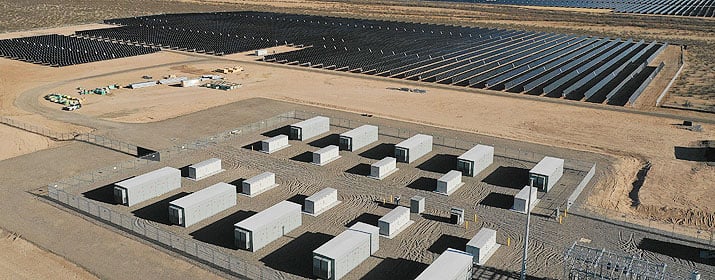
20 May 2021: Mobile energy storage and ‘power-as-a-service’ startup Moxion looks to replace generators in construction industry
Investors including Energy Impact Partners contributed to a US$10 million Series A funding round closed by Moxion Power, a US manufacturer of mobile energy storage systems.
Enjoy 12 months of exclusive analysis
- Regular insight and analysis of the industry’s biggest developments
- In-depth interviews with the industry’s leading figures
- Annual digital subscription to the PV Tech Power journal
- Discounts on Solar Media’s portfolio of events, in-person and virtual
Aimed at industries such as construction which rely on portable, outdoor power systems, Moxion believes its equipment, which customers will be able to rent, will help replace fossil fuel generators.
Generators using diesel and other fossil fuels do not just contribute negatively to greenhouse gas emissions (GHGs), they also create air and noise pollution which harm not only communities nearby but also the workers that rely on them.
Moxion Power’s business model of “power-as-a-service” seeks to allow the company to rent anything up to large fleets of electric equipment as well as energy storage. The company has begun pilot rental programmes with general contracting firms based in California.
19 May 2021: Location search for KORE Power’s 12GWh US lithium-ion battery factory narrows down
KORE Power has narrowed down its location search for a new 12GWh lithium-ion battery manufacturing facility to three US states.
The Idaho-headquartered manufacturing and system integration start-up currently builds products at factories in China but has said that a million square foot factory in the US will enable it to create a “reliable and independent supply chain” within the country.
The factory will be located at sites in either Arizona, Florida or Texas. KORE Power executives conducted research of the three sites and will make a final decision based on numerous factors including monetary analysis and evaluation of the location from state, regional and specific site perspectives.
The company currently has 2GWh of production facilities in China that it is ramping up to 6GWh. Its Mark 1 battery module and units have completed UL9540A testing for thermal runaway propagation, the company said in March.
“We are delivering critical capacity in a market that’s starved for supply as we support the US and global communities becoming greener. Because we use proprietary software in our battery management systems, maintain the rights over our battery cell intellectual property and have influence over our minerals and materials process, we can quickly serve customers and adapt to changing needs, in an environment when many others are reportedly sold out until 2022,” KORE Power CEO Lindsay Gorrill said.
Mid-May 2021: Ørsted switches on its first US large-scale solar-plus-storage hybrid
Danish utility giant Ørsted announced the completion of its first utility-scale solar-plus-storage facility in the US earlier this month.
The Permian Energy Centre in Andrews County, Texas, consists of a 420MWac solar PV system and 40MWac of battery energy storage. The project has been developed with around 1.3 million PV modules from major Chinese PV manufacturers Jinko Solar and JA Solar, employing roughly 300 workers during the construction phase.
It is not the only project Ørsted is working on in Andrews County. The company secured a power purchase agreement (PPA) with pharmaceutical group MSD for a 200MW solar park in the area last month.
The Danish developer broke ground on the solar-storage hybrid project in late 2019, and welcomed Mads Nipper as its new chief executive at the start of this year.
Mid-May 2021: Tucson Electric Power switches on solar-plus-storage system as it anticipates 1,400MW of storage on its networks by 2035
Arizona utility Tucson Electric Power (TEP) switched on its Wilmot Energy Center solar-plus-storage project at the end of April.
Combining 100MW of solar fitted with a tracking system with 30MW of battery storage, TEP said it is the largest system of its kind so far on the utility’s grid. The battery system is charged from the 314,000 PV modules onsite, during the hours of peak solar production and then energy is discharged to the grid in the afternoon as customer demand for electricity peaks.
TEP supervisor of automation, metering and production engineering Christopher Lynn said in addition to integrating the variable generation from the solar array, the energy storage system will be able to perform multiple other grid-supporting applications, like voltage support.
The utility said battery storage will play an “important role” in its plan to increase solar and wind’s share of its generation mix to 70% and reduce carbon emissions 80% by 2035. It anticipated that energy storage resources on its network will increase from 50MW to 1,400MW by that time in its most recent integrated resource plan (IRP) document. In addition to the Wilmot Energy Center, TEP currently has two 10MW battery systems that provide frequency regulation and other grid-balancing services.
Ørsted story first appeared on PV Tech, written by Edith Hancock.






